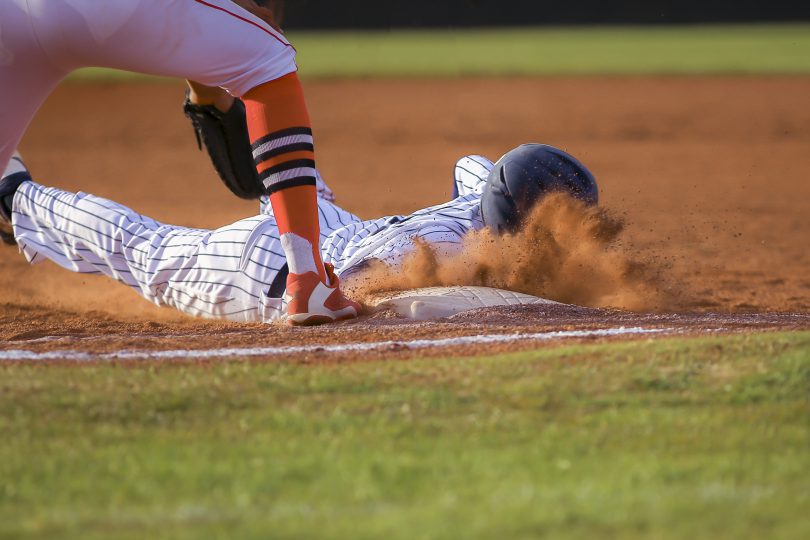The Situation:
It’s the bottom of the 9th and the home team has sparked a rally in a 4-3 game. With 1 out, they have loaded the bases with a walk, a bloop single, and an error by the shortstop. Stepping into the box is the two hitter—arguably their hottest hitter at the moment. Everyone is up in the dugout and the fans are behind them, feeling the momentum having shifted in their favor. With the winning run at 2nd, the batter steps into the box…
The Play:
The 0-0 breaking ball comes in low and the hitter doesn’t bite, taking it for a ball. He steps back in the box, looking for a fastball out over the middle. The pitcher delivers exactly what he is looking for and he picks it up right out of the hand. Half a second later, the ball is screaming out towards right field on a waist high line drive. The runners at 3rd and 2nd freeze, waiting to see that the ball gets through. The runner at first, caught up in the moment and reacting to the hard hit ball takes several hard steps towards second when he sees the second baseman dive. The runner tries to put on the brakes and loses his footing.
The Outcome:
The second baseman makes a diving catch fully extended—a web gem to say the least. He scrambles to his feet at the same time that the runner at 1st regains his footing and tries to get back to 1st. The second baseman fires a strike to the first baseman whose stretch allows the throw to just beat the diving runner, completing the double play and ending the game. The comeback is over.
What Went Wrong?
In this scenario, the error is pretty obvious. With the tying and winning runs ahead of him on the bases, the runner at 1st means nothing toward the outcome of the game. Instead of reminding himself of his responsibilities on a batted ball and realizing that he has little value as a potential run, the runner gets caught up in the situation. At any point in the game, it is vital to read the situation and realize the importance of the potential run that you represent. As we already mentioned, the runner on 1st had little value for the offense at that time. In this situation, he should have erred on the side of caution, reminding himself between each pitch of his responsibilities before taking his lead. Doing your pre-pitch homework is the best way to avoid errors of reaction. When you see a ball hit hard on a line, your natural reaction is to run. However, if you remind yourself that your responsibility is to get back on a line drive and that your run isn’t the one that matters, you are more likely to make the right decision, even in a pressure-filled comeback. If your run is of little consequence to the outcome of the game, don’t be in a hurry. Do your pre-pitch homework, know your responsibility, and make sure your team comes out on top!






